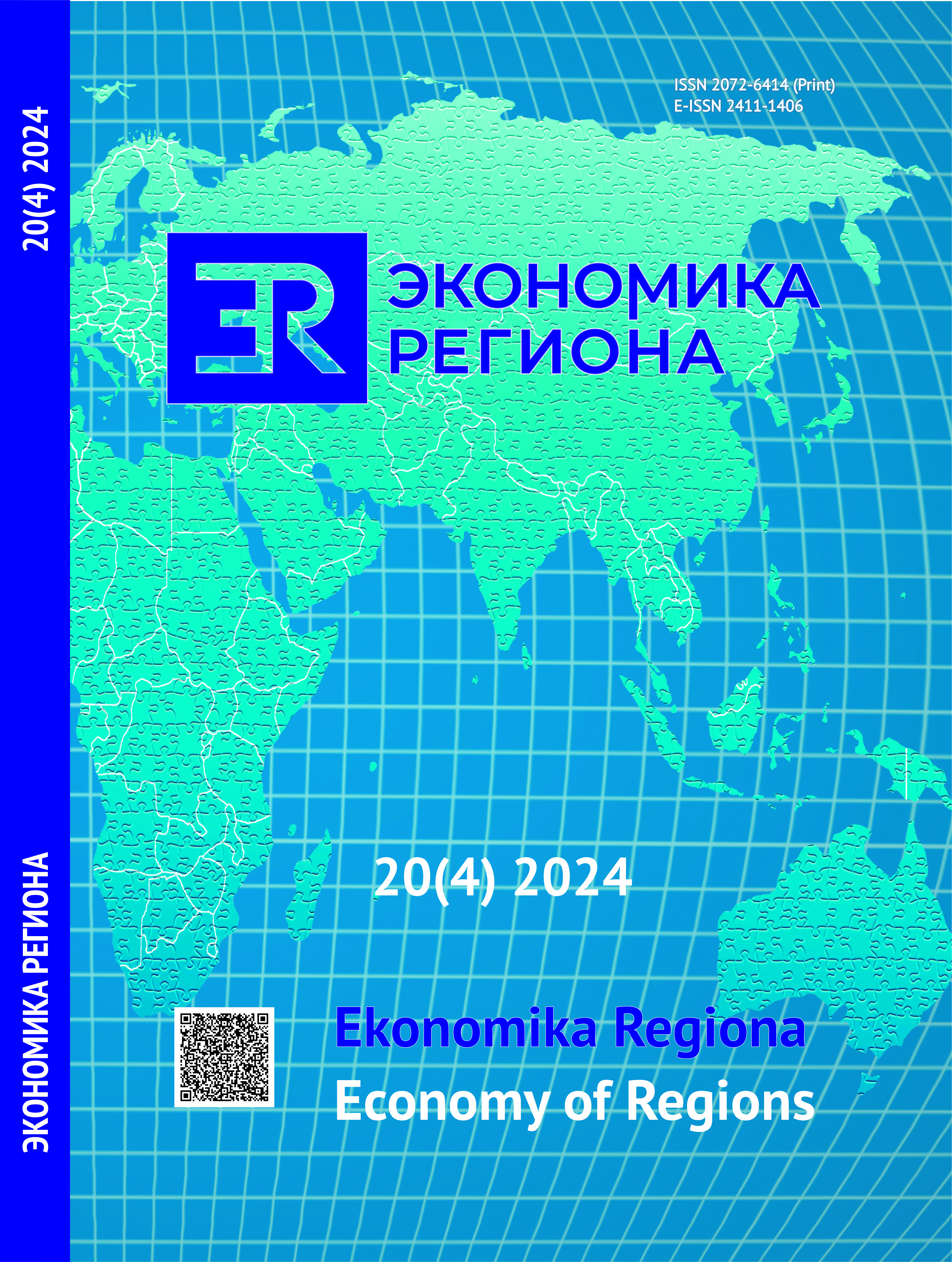Prerequisites and Consequences of Territorial Servitisation in Russian Regions
DOI:
https://doi.org/10.17059/ekon.reg.2024-4-6Keywords:
territorial servitisation, regional development, industrial development, knowledge-based business services, manufacturing companies, servitisation strategies, productivity, industrial policyAbstract
The need to find new sources of economic growth in industrial and old industrial areas determines the importance of research into the relationship between knowledge-intensive business services and industrial development in regions. This paper aims to explore how Russian regions participate in territorial servitisation, focusing on the growth of knowledge-intensive business service activities. The study also seeks to determine whether this participation helps boost productivity in manufacturing companies by implementing a servitisation strategy—specifically, by adding services to their products. The proposed analytical framework addresses the gap between research on the effects of servitisation strategies and the potential for enhancing a region’s industrial capacity through the knowledge-intensive business services sector. This study is the first to use Russian data to explore the concept of territorial servitisation, thereby contributing to the advancement of this topic in economic literature through its novel methodology. The research employs a three-step CDM model with fixed effects for panel data. Based on the econometric analysis of manufacturing companies across 56 Russian regions, the findings indicate that the integration of knowledge-intensive business services into the regional economy is positively influenced by market size and an increase in the number of manufacturing firms. Moreover, the anticipated growth rate of knowledge-intensive services is positively associated with the servitisation of manufacturing firms in the region. In addition, the study shows a positive correlation between the projected share of employment in servitised firms and productivity in manufacturing firms, as measured by output per employee. The results of this study can inform policy-making in regional economic and industrial development. However, the study faces limitations related to the challenges of accurately capturing the actual use of service classifications (OKVEDs) by Russian manufacturing companies.
Downloads
Published
How to Cite
Issue
Section
License
Copyright (c) 2024 Пушкарев Андрей Александрович , Ружанская Людмила Станиславовна , Тяжельников Валентин Дмитриевич

This work is licensed under a Creative Commons Attribution 4.0 International License.




